Rare Rides Icons: The History of Stutz, Stop and Go Fast (Part XIX)

Today we find ourselves in the 19th chapter of Stutz historical coverage. In the early Eighties Stutz (somewhat) successfully branched out from its Blackhawk-only product line, and made the Bearcat targa, the Bearcat II convertible, some SUVs for dictatorial armament and parade usage, as well as sedans and limousines.
We’re in the latter group of automobiles at the moment. So far we’ve covered the one-off Duplex that found no customers, and its successor the IV-Porte that did. After the IV-Porte came the Victoria, which added 10 additional inches to IV-Porte’s base, the B-body Bonneville. Victoria survived the Bonneville’s full-size demise in 1981 and moved its basis to the similar Oldsmobile 88 in 1982. Around that time Stutz added an even more exclusive, larger, and more garish sedan to the lineup. Let’s talk about Diplomatica.
Diplomatica was the realization of an idea Stutz had circa 1969. When it published the brochure for the Blackhawk and Duplex, there was an additional prototype pictured called Ministeriale. We discussed the large sedan a few entries ago and learned the build was in fact a completed car from Italian coachbuilder Coggiola that used a Fleetwood Brougham chassis. Ministeriale was never made, as the simpler Duplex design was produced instead.
But the Ministeriale idea remained in the background somewhere at Stutz. As the company moved on after Duplex, the car’s eventual name was attached to sketches for the 1977-1978 IV-Porte. In the lower right corner of the sketch was STUTZ SEDAN DIPLOMATIC. A few more years passed and Stutz proved its concept for ever-larger luxury sedans. Circa 1981 it was time for their largest yet, in Diplomatica.
Brochures used its full name - Stutz Diplomatic Sedan - as the company was over being coy about who the intended customer was. Underneath the new Diplomatic was an old car: a C-body Fleetwood Brougham. In production from 1977 through 1986, the C-body was also used on the last rear-drive Deville and on lesser flagships like the Buick Electra and Oldsmobile 98. General Motors renamed the C-body to D in 1985 upon the Deville’s switch to front-drive.
The wheelbase on the Fleetwood Brougham was shortened in its 1980 refresh very slightly, to 121.4 inches. Overall length from 1980 through 1986 was an even 221 inches, while the width for the sedan was 75.3 inches. Weight on a Fleetwood ranged from about 4,000 pounds for a two-door to 4,500 for a fully-equipped sedan. Stutz made adjustments to the already very large Fleetwood and turned it into a truly enormous sedan.
Unlike the Victoria that received its additional inches via clumsy add-ons to the front end and passenger compartment, the Diplomatica had more serious chassis work: The C-body’s wheelbase was stretched nearly 16 inches, to an even 137”. Stutz also added five inches of width in its transformation and ended up with 80” overall. Not content with a foot of additional wheelbase, Stutz made the Diplomatica much longer than the Fleetwood. It measured an even 247 inches, 26 more than the Cadillac.
Under the Diplomatica’s hood was an indicated 500 cubic inch engine. In the Eighties, GM did not produce an 8.2-liter big block V8, which leaves a couple of possible interpretations. Perhaps the 500 indicated in the Diplomatica brochure meant 5.0 liters or the Olds 307 found in the Fleetwood.
Or, it could mean Stutz rustled up some examples of the Cadillac big block that ended production in 1977. The engine was a part of the C-body through 1976, so it would fit under the massive engine bay. Your guess is as good as mine.
Once it was done adjusting the chassis to suit its purposes, Stutz removed most of the Cadillac’s panels and substituted its own Stutz design. Almost identical in looks to the contemporary Victoria, the Diplomatica was just more of everything. Though in essence the idea underneath was from the Ministeriale in the Seventies, Stutz decided not to venture from corporate styling with its largest sedan.
The pointed chrome nose was presented alongside requisite Exner free-standing headlamps and driving lamps, and fenders had their awnings as expected. Unlike the IV-Porte to Victoria translation, the additional width of the Diplomatica meant new fabrication was required for the body panels. But that didn’t stop some parts sharing, like the familiar chromed Bonneville bumper.
Paolo Martin’s design work stretched easily enough for the Diplomatica. The familiar chromed side trim strip extended further than it ever had before and curved over the rear wheel once it arrived. There were no faux side exhausts, as the precedent for their withdrawal was set by Victoria. Lower chrome door bars like the Victoria were used but had an additional extension past the rear door and right to the wheel well.
The thicker C-pillar from the Victoria was thickened even more for the Diplomatica. It added a flourish via a covered opera window design, which was decorated with a logo of the customer’s choosing (more on that in a moment). The small rear window of the Diplomatica was the same as on the Victoria and stood above a similar rear end. Wheel designs were different: Stutz offered a new chrome wheel cover instead of the sporty wire wheel it commonly provided.
The additional length of the Diplomatica appeared mostly in the passenger compartment and meant Stutz had to do some rear door configuration. The Fleetwood’s rear door was cut around the wheel arch, which was not necessary for the Diplomatica. Stutz filled in the space with metal, and then did something interesting with the window layout: they reversed it. The faux vent window that was toward the rear in the Cadillac was in the middle of the Diplomatica.
Inside, Diplomatica carried over the front-end fixtures and fittings from the Victoria, which was a continuation of the IV-Porte, Blackhawk, and so on. The rear accommodations were different and featured Fleetwood door panels trimmed in the most exclusive leather materials. There was new wood paneling, thick carpets, and a rear center console that was fitted with a television, barware, and a refrigerator.
These pictures were a rare Google find; photographs taken of a Stutz brochure that was sold last year on a random auction site. Happily, the scans also show the asking price for a Diplomatica in 1981: $150,000 ($510,820 adj.). That was quite a jump over the IV-Porte’s ask of $84,500 ($287,762 adj.) in the same year and meant the Diplomatica was definitely the most expensive car in the world in 1981. How many customers do you think ponied up for the Diplomatica?
Exactly seven. Six of them were specially ordered by the Saudi royal family, a repeat customer. All were equipped with special Saudi Arabian emblem hood ornaments and featured a repeat of the emblem inlaid into the C-pillar. One Diplomatica (in green) was ordered by a US customer, which specified a big W on the C-pillar.
No, not Wayne Newton or the W Hotel, but a company called Winfield Racing Stable. Located in Fort Lauderdale, the company was established in 1980 to do… something, perhaps to do with equestrian betting. The company also ordered an IV-Porte around the same time. It likely did not own either car long, as it was “involuntarily dissolved” by Florida in 1986. It fell to private US ownership through 2009 and passed to a US car dealer who sold it abroad to Hungary. It was last seen for sale in Hungary in 2020 when it surfaced in a harried YouTube video.
With its Diplomatica, surely Stutz had arrived at the largest four-door they could possibly make, right? Nope! There was an even longer Stutz that was made from many bits donated by the Diplomatica. See you next time.
[Images: Stutz]
Become a TTAC insider. Get the latest news, features, TTAC takes, and everything else that gets to the truth about cars first by subscribing to our newsletter.

Interested in lots of cars and their various historical contexts. Started writing articles for TTAC in late 2016, when my first posts were QOTDs. From there I started a few new series like Rare Rides, Buy/Drive/Burn, Abandoned History, and most recently Rare Rides Icons. Operating from a home base in Cincinnati, Ohio, a relative auto journalist dead zone. Many of my articles are prompted by something I'll see on social media that sparks my interest and causes me to research. Finding articles and information from the early days of the internet and beyond that covers the little details lost to time: trim packages, color and wheel choices, interior fabrics. Beyond those, I'm fascinated by automotive industry experiments, both failures and successes. Lately I've taken an interest in AI, and generating "what if" type images for car models long dead. Reincarnating a modern Toyota Paseo, Lincoln Mark IX, or Isuzu Trooper through a text prompt is fun. Fun to post them on Twitter too, and watch people overreact. To that end, the social media I use most is Twitter, @CoreyLewis86. I also contribute pieces for Forbes Wheels and Forbes Home.
More by Corey Lewis
Latest Car Reviews
Read moreLatest Product Reviews
Read moreRecent Comments
- James Jones The only thing that concerns ,me is a government-mandated back door--you get in and your car drives you to the police station where yo are arrested for crimes against the state, or "you can't drive because we must achieve our energy conservation goals". Not to mention that once there's a back door, any sufficiently smart person can use it--you can't create a back door only usable by those whose hearts are true. So then there'd be the risk of someone telling my self-driving car to drive off the side of a mountain/into a river/etc.
- 3-On-The-Tree Jeff I also have a 1980 Suzuki GS1000G I rode during college and it was a lot of fun. My other bike was a 1977 Suzuki GT 750 2 stroke. My post army retirement time will be restoring those old bikes next to the 02 Hayabusa, 05 Suzuki Vstrom and klr 650. I love riding but at much reduced speeds nowadays. I got it out of my system as a young flight Lieutenant.
- Canam23 I really like the Rivian, but no matter what it's payload is, it will be completely weighed down by smugness if they team up with Apple.
- Fed65767768 Good Christ, no.CP.
- Kwik_Shift_Pro4X The main advice I've heard is to stay away from the BMW engine.




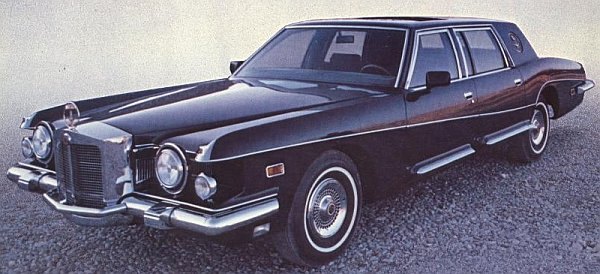



















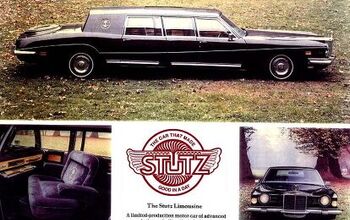

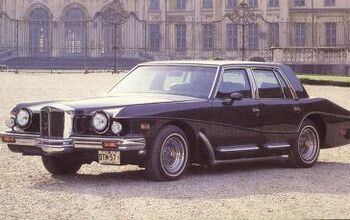
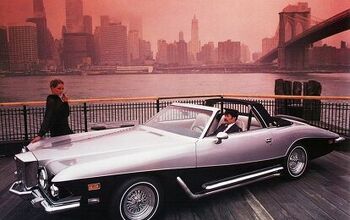
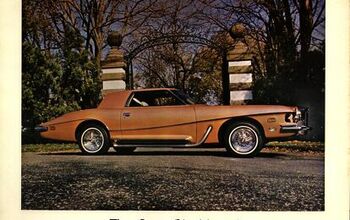










Comments
Join the conversation
The interior is lavish... the rest is absolute garbage. Enough already!
I love the Stutz lavish luxury designs but this one has a tough time blending “Squared” off 1980’s roof line with previous decades of beautiful sweeping fenders, hoods, and deck lids. I do like this one for what it is, I admire it. I can see this model doing well with the big oil Saudis and such. If I had a lot money and wanted a”Stutz” car I would most likely not be buying this one.